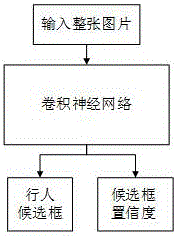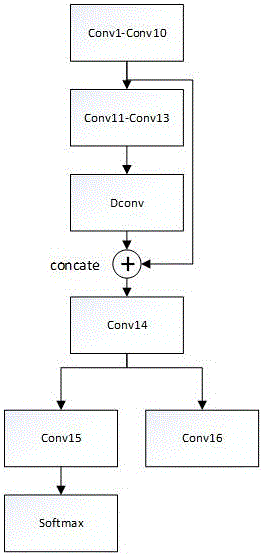Pedestrian detection method based on end-to-end convolutional neural network
A convolutional neural network and pedestrian detection technology, applied in the field of pedestrian detection of convolutional neural networks, can solve the problems of lack of end-to-end training, high missed detection rate, and complex system, achieving good recall rate, The effect of low missed detection rate and saving computing resources
- Summary
- Abstract
- Description
- Claims
- Application Information
AI Technical Summary
Problems solved by technology
Method used
Image
Examples
Embodiment Construction
[0025] The present invention will be further described below in conjunction with accompanying drawing:
[0026] Some terms in the present invention are explained as follows:
[0027] Term 1: BP Algorithm
[0028] The BP algorithm is a backpropagation algorithm, which is divided into two parts, the forward process and the reverse process. The forward process refers to the process of inputting data into the network to obtain the final result, and the reverse process refers to the process of combining the forward process and The difference between the actual values of the samples is used as an error to update the network weights.
[0029] Such as figure 1 As shown, the present invention obtains a convolutional neural network model capable of predicting the confidence of pedestrian candidate frames and corresponding frames by constructing an annotated image library as a training sample set and performing end-to-end training directly. During the test, input the test picture in...
PUM
 Login to View More
Login to View More Abstract
Description
Claims
Application Information
 Login to View More
Login to View More - R&D
- Intellectual Property
- Life Sciences
- Materials
- Tech Scout
- Unparalleled Data Quality
- Higher Quality Content
- 60% Fewer Hallucinations
Browse by: Latest US Patents, China's latest patents, Technical Efficacy Thesaurus, Application Domain, Technology Topic, Popular Technical Reports.
© 2025 PatSnap. All rights reserved.Legal|Privacy policy|Modern Slavery Act Transparency Statement|Sitemap|About US| Contact US: help@patsnap.com



